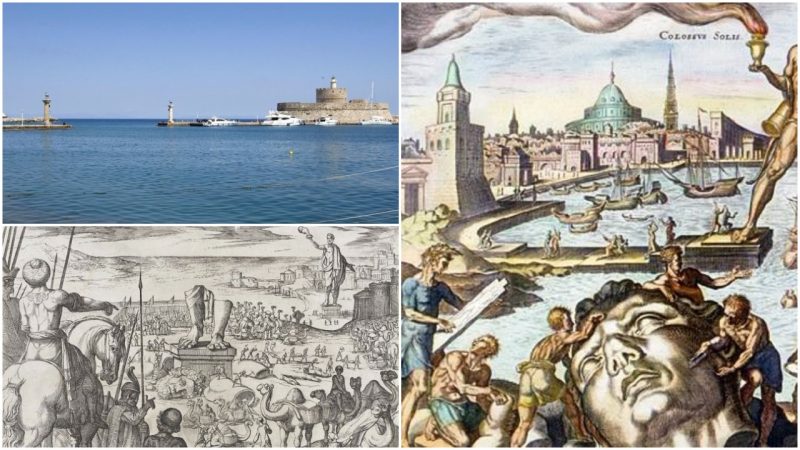To you, O Sun, the people of Dorian Rhodes set up this bronze statue reaching to Olympus, when they had pacified the waves of war and crowned their city with the spoils taken from the enemy. Not only over the seas but also on land did they kindle the lovely torch of freedom and independence. For to the descendants of Herakles belongs dominion over sea and land.
Dedication text for the Colossus
A massive statue of a male figure, the Colossus of Rhodes was one of the Seven Wonders of the Ancient World and was built sometime around 280 BC.
The statue stood tall and proud on the Greek island of Rhodes, and as ancient accounts suggest, it was built in honor of the sun god Helios. It is also a monument to the Rhodians’ victorious defense of their island against a siege commanded by Macedonian leader Demetrius Poliorcetes in 305 BC. The legends further speak of how the people of Rhodes sold the equipment left behind by the Macedonians, and that’s how they sponsored the statue’s construction.
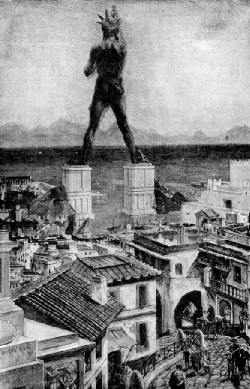
The massive statue was designed by Greek sculptor Chares of Lindos and was up to 110 feet tall atop a 49-foot platform. In contrast, the Great Pyramid of Giza, the only ancient world wonder surviving to date, initially rose some 481 feet upon completion. Another of the seven ancient world wonders, the Statue of Zeus at Olympia, was about 40 feet tall.
The ancient sources vary to some extent in depicting the Colossus of Rhodes. Work on the statue began around 292 BC; supposedly it was made of iron tie bars to which brass plates were attached to make the skin. The statue’s interior was continually filled with stone blocks as construction advanced. The whole thing stood on a white marble pedestal, located near the Mandraki harbor entrance.
It took twelve years for the ancient workers to complete the Colossus of Rhodes. Most likely, during construction, they piled mounds of earth on the sides of the enormous statue. Once completed, the workers removed all the earth, leaving the wondrous structure standing and dominating the ancient port.
The statue stood for 54 years until the island of Rhodes was hit by a strong earthquake in 226 BC. The disastrous event caused considerable damage to large sections of the city, including the harbor.
The statue also suffered damage, breaking at the knees and shattering to the ground. As described by the Greek geographer Strabo, the remnants of the gigantic statue rested on the ground for over eight centuries.
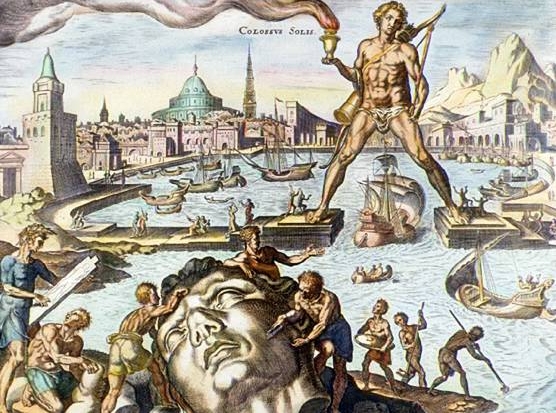
Despite being broken, travelers from all over came to see them. Pliny the Elder, the Roman philosopher, also noted that few people were able to wrap their arms around the fallen thumb. In fact, each of the Colossus’ fingers must have been larger than most ordinarily-sized statues.
In 653, Rhodes was captured by the Arabs, and as The Chronicle of Theophanes the Confessor implies, the remnants of the statue were melted down and traded to a Jewish merchant of Edessa.
The merchant then used 900 camels to load the cargo. The Arab destruction and the professed sale to a Jew possibly started a compelling metaphor for Nebuchadnezzar’s dream about the destruction of a great statue (Nebuchadnezzar, being the successor of Nabopolassar, the founder of the Neo-Babylonian empire).
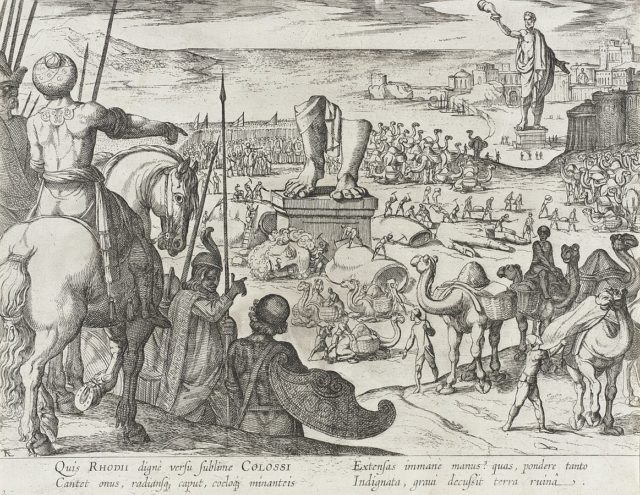
The exact location of the ancient statue remains is still disputed today. The German academic Ursula Vedder argues that the Colossus was never situated in the port of the city, although a good portion of the sources suggests the Mandraki as the location of the ancient monument.
According to Vedder, the wonder was atop the hill today bearing the name of Monte Smith. The hill overlooks the port, and traditionally it is believed to have been devoted to Apollo. There is a huge stone foundation at a temple site situated on the hill, the purpose of which is still not clear to modern scholars. Given that the site served as a Helios sanctuary, the foundation may have been the supporting platform of the Colossus.
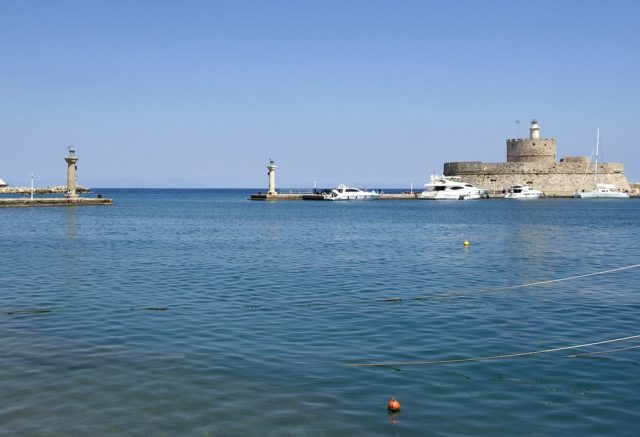
Plans for erecting a new and modern Colossus have been doing the rounds in Greece for almost a decade now. According to History, government officials announced such plans in 2008, but “rather than being a replica, it’s intended to take shape as the planet’s largest light sculpture.”
In 2015, a group of European architects also announced plans to build a modern Colossus. As the Telegraph further reports, “The new Colossus will straddle the two outer piers of the harbor. Facing the Aegean, it will clutch a huge beacon in its raised right hand which will be visible not only to passing ships but as far as the Turkish coast, 35 miles away.
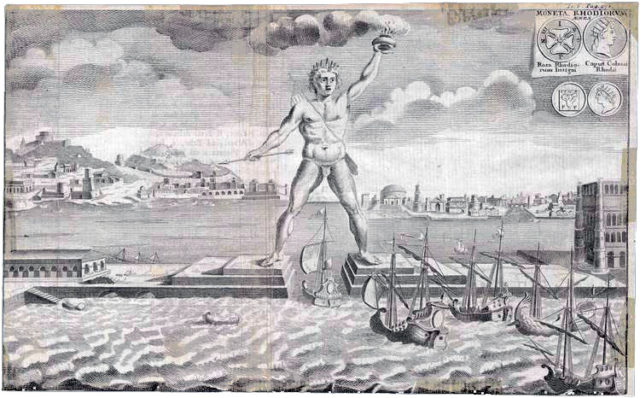
Its beacon will not only act as a lighthouse but also contain a viewing platform. Ships will sail between the statue’s legs.” This last proposed project has an estimated cost of $283 million.
Read another story from us: The lost cities of the ancient world
We are yet to see whether any of these plans materialize in the near future. It would certainly be exciting to see any authentic revival of the ancient wonder of Rhodes.
